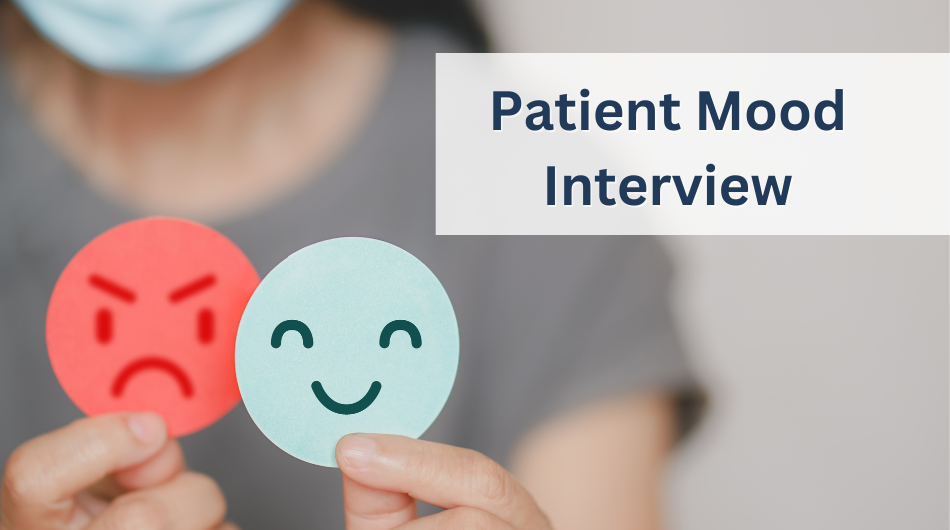When CMS released drafts of the new OASIS-E data set in early 2022, many were very excited to see that M1730, which contains the PHQ-2 assessment, was leaving the OASIS data set. It did not take long for the excitement to fizzle out, as it was quickly discovered that M1730 was leaving the OASIS only to make room for D0150, where the new PHQ-2 to 9 is housed. So not only did the PHQ-2 move to a new section in the OASIS and get a new prefix, but it got a new name, and it more than tripled in size. Where previously the PHQ-2 contained 2 questions, the new PHQ-2 to 9 contains nine questions. Let’s break down what all this means.
What is the OASIS E PHQ-2 to 9?
The PHQ-2 to 9 is not used to establish a final diagnosis or to monitor depression severity, but rather to screen for depression. Patients who screen positive should be further evaluated to determine whether they meet criteria for a depressive disorder. The fact that depressed mood is often associated with psychological/physical distress, decreased participation in activities and functional status, and poorer outcomes, likely explains why CMS decided to take the assessment a little further on the new OASIS E data set, and include all nine questions. Mood distress is often underdiagnosed and undertreated, but a common occurrence in home health patients. By administering this quick assessment, signs of symptoms of mood distress can be identified timely and many times the patient can be treated to help improve outcomes.
What questions are asked on the PHQ-2 to 9?
The first two questions are familiar because they make up the PHQ-2 on the OASIS D-1 data set and are used to determine if the interviewer should continue to ask questions or end the PHQ interview.
These questions are:
- Little interest or pleasure in doing things
- Feeling down, depressed, or hopeless
The remaining seven questions are only asked if the patient scores positively on the first two questions.
These questions are:
- Trouble falling or staying asleep, or sleeping too much
- Feeling tired or having little energy
- Poor appetite or overeating
- Feeling bad about yourself-or that you are a failure or have let yourself or your family down
- Trouble concentrating on things, such as reading the newspaper or watching television
- Moving or speaking so slowly that other people could have noticed. Or the opposite-being so fidgety or restless that you have been moving around a lot more than usual.
- Thoughts that you would be better off dead, or of hurting yourself in some way
How and when is the PHQ-2 to 9 administered?
CMS requires that the PHQ-2 to 9 be completed as close to the time of Start/Resumption of Care as possible and again as close to the time of Discharge as possible. Because the nine question assessment is fairly simple to use, clinicians may choose to use the assessment more often throughout the episode of care to monitor for changes in signs/symptoms of depression, particularly if the patient experiences physical decline or increased loss of function and independence.
Patients always have the right to refuse to respond to the questions on the PHQ-2 to 9, but as best practice, clinicians should attempt to conduct the interview on ALL patients. Clinicians should try to explain the interview reasoning in a way that makes the patient more comfortable providing answers. Since the questions are sensitive in nature, the interview should be conducted in a private setting, and alternatives such as written questions should be offered if necessary. The questions must be asked in order and exactly as they are listed on the assessment, and the clinician should explain all possible responses so that the patient can choose appropriately. Allow patients time to explain their answer if necessary, and score based solely on the patient’s interpretation. If the patient reports the presence of a symptom they will then be asked how often in the past 2 weeks they experienced the feeling: Never/1 day, 2-6 days, 7-11 days, or 12-14 days. A score is then assigned to each of the patient’s responses and added to develop a Total Severity Score.
How do I know if my patient has a positive PHQ-2 to 9?
The PHQ-2 to 9 is not used to establish a final diagnosis or to monitor depression severity, but rather to screen for depression so that the MD can be notified and a plan can be put into place to get a patient swift treatment if depression is confirmed. If the full PHQ-2 to 9 is completed and not stopped after the first 2 questions, risk can be easily identified based on the final scores. If 5 of the 9 items are present 7-11 days out of the last 14, then Major Depressive Syndrome is suggested. If the patient reports feeling down (b), sleeping difficulties (c), or having little energy (d) over the past 7-11 days, then the patient may be experiencing Minor Depressive Syndrome.
Keep in mind that this screening can be used as frequently as needed to track changes in severity over time, which is particularly helpful if the initial PHQ-2 to 9 leads to interventions that involve medications, or behavior notifications that need to be assessed for effectiveness.
Changes in the total severity score can indicate improvement or worsening in condition, based on the following scores:
- 0-4 : minimal depression
- 5-9 : mild depression
- 10-14 : moderate depression
- 15-19 : moderately severe depression
- 20-27 : severe depression


